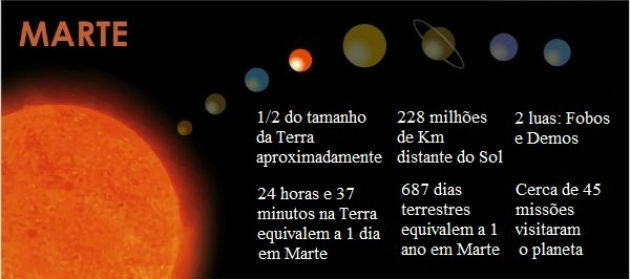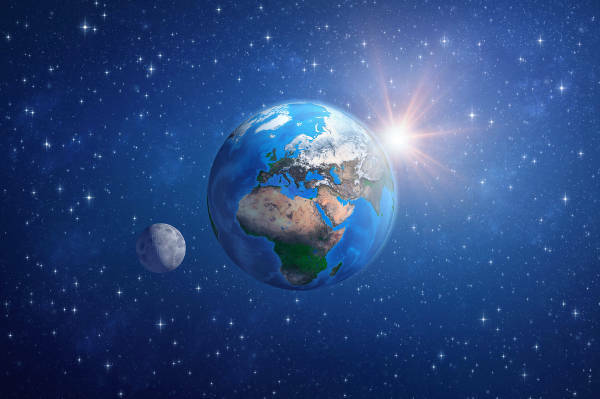Mars it is the fourth closest planet to the Sun and the second smallest planet in the solar system, after Mercury, being considerably smaller than planet Earth.
It has a reddish color, due to the presence of iron oxide on its surface. Hence, it was named Mars, in honor of the Roman god of war.
It has two small, irregularly shaped moons: Phobos (fear) and Deimos (panic). Their names derive from Greek mythology and represent the children of Ares (Mars) and Aphrodite (Venus).
Mars is one of the most studied planets in the solar system. It can be seen from Earth with the naked eye, that is, without the aid of a telescope.
The length of the day on Mars approximates that of planet Earth, with 24 hours and 37 minutes, although the Martian year lasts 687 Earth days.

Mars Characteristics
Mars is a very cold, arid and rocky planet. Its maximum temperature is approximately 25°C, with an average of -60°C, which can reach around -140°C at night.
Being a terrestrial (rocky) planet, its layers are composed of atmosphere, crust, mantle and core. Most of the rocks on the surface are formed by basalt.
Its atmosphere is very thin and is composed essentially of carbon dioxide, although there is less nitrogen, oxygen, argon, among other gases.
Fourth planet in the solar system, its average distance from the Sun is 228 million km.
It has two natural satellites, which are the "two moons of Mars". These satellites were discovered in 1877 and many scientists believe they may have been asteroids captured by gravity from Mars.

life on mars
Known since antiquity, since the 19th century Mars has attracted greater attention among astronomers and scientists.
Since the red planet resembles the Earth in several aspects, such as the seasons, relief (valleys, dunes, plains, plateaus, canyons, etc.) and Earth day approaching (almost 24 h), there are researches that bet on the existence of life in the planet.
However, the fact of being involved in a thin and very rarefied atmosphere reinforces the impossibility of living conditions on the planet.
What aroused even more the interest of scientists today was a study carried out in 2000 by NASA (National Aeronautics and Space Administration).
In this study, the existence of erosive processes on the planet was confirmed, which evokes the possibility of the existence of water and, consequently, of life on Mars.
Although these signs have been discovered, the existence of other beings on the planet has not yet been proven. However, this does not exclude the possibility that it was inhabited in a remote past.

Read too:
- Planets of the Solar System
- Solar system
- Types of Planets
- Moon Features
- Sun Characteristics
Curiosities about Mars
See the video below, some trivia from Planeta Vermelho.
Know all about the planets in the solar system:
- Mercury
- Venus
- Earth
- Jupiter
- Saturn
- Uranus
- Neptune


